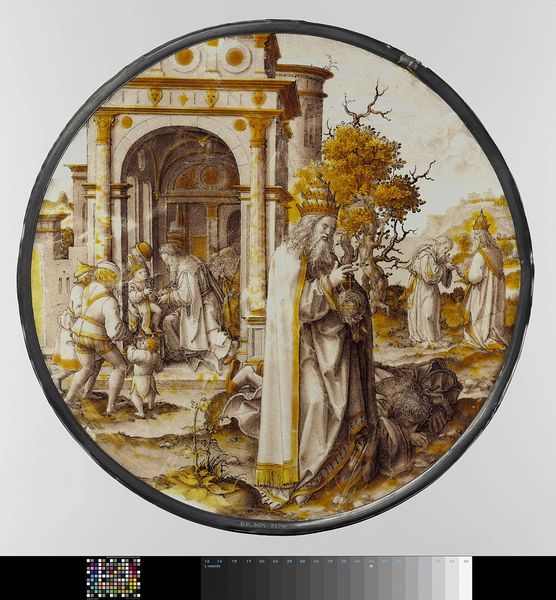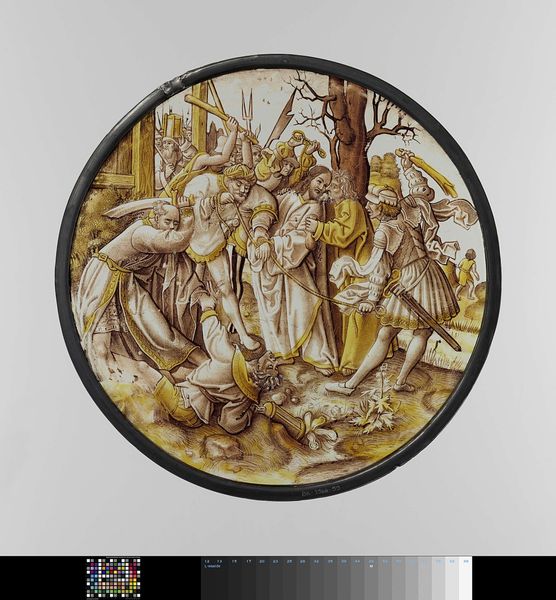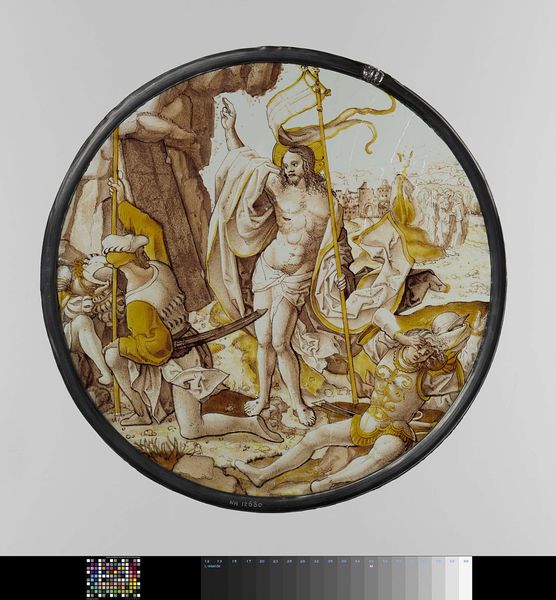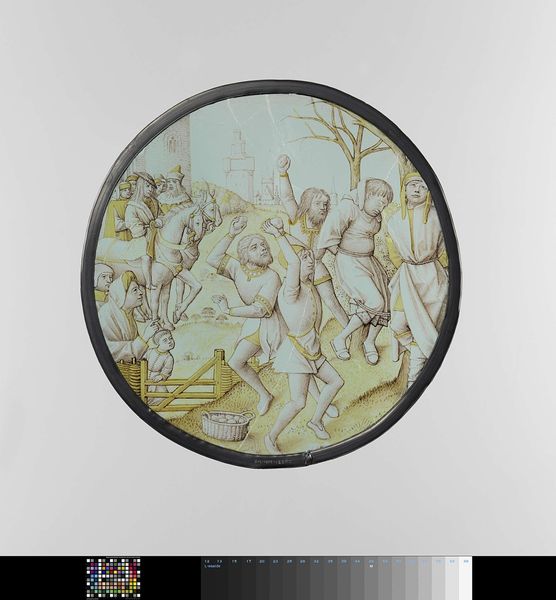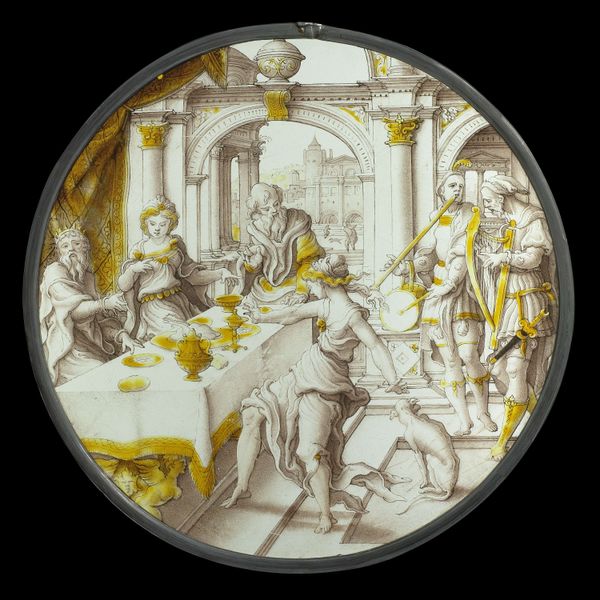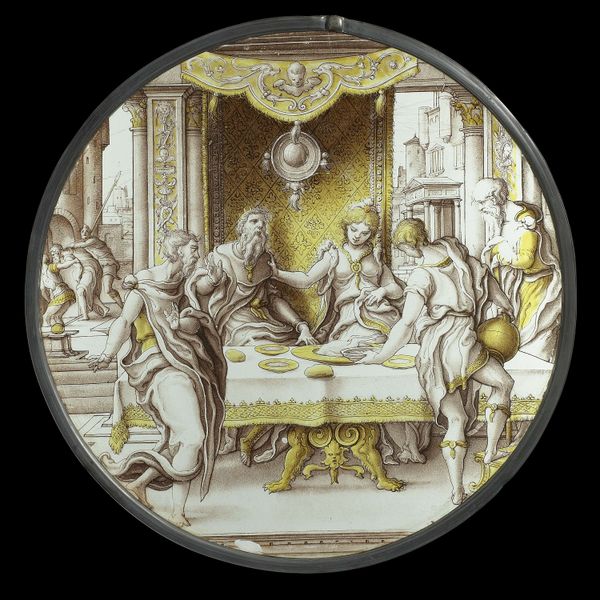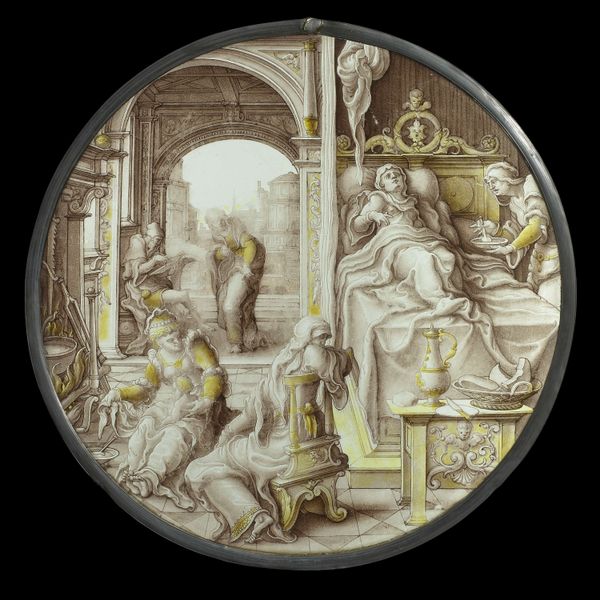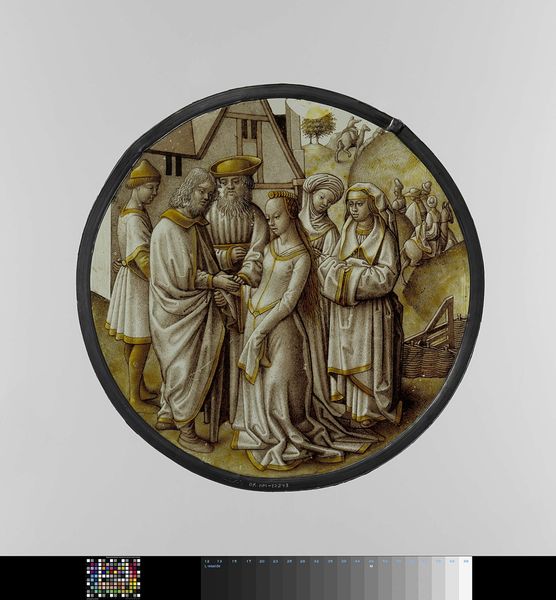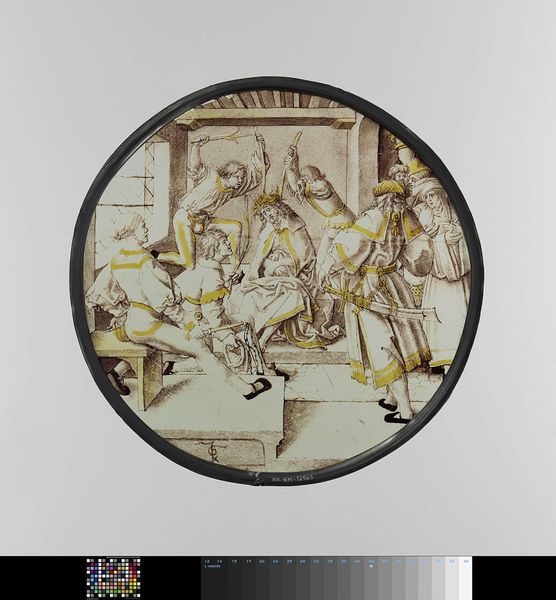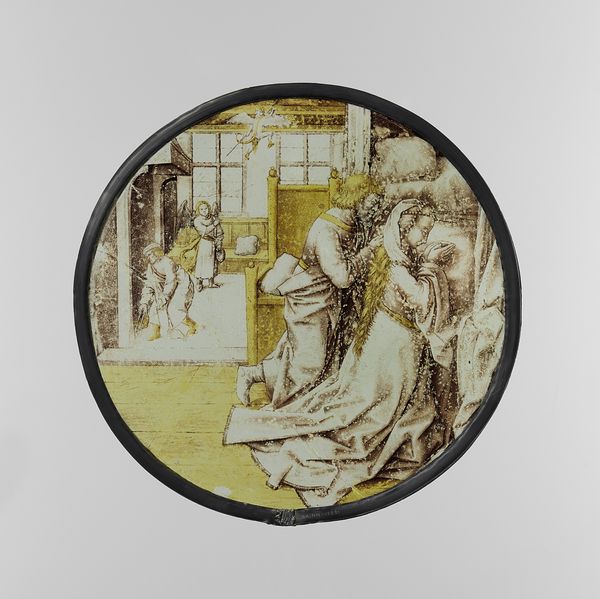
tempera, painting
#
portrait
#
narrative-art
#
tempera
#
painting
#
figuration
#
11_renaissance
#
classicism
#
history-painting
#
northern-renaissance
#
decorative art
#
miniature
Copyright: Rijks Museum: Open Domain
Editor: This tempera painting from 1542, titled *The Judgement of Cambyses* by Dirck Vellert, is incredibly striking, though the scene is unsettling. The graphic details of the flaying are hard to ignore. How would you interpret the role of such a visceral depiction within the broader context of art and society at that time? Curator: It's important to consider the historical context of legal and social norms in 16th-century Europe. Public executions and displays of justice, even brutal ones, served a very public role in maintaining social order. This work likely aimed to serve a didactic function. How might the visual elements reinforce moral lessons? Editor: I see, so the horror we feel today was perhaps intended as a stark warning. Is the intent only directed at judges behaving justly, or could the general population be implied? Curator: I'd say both. This isn’t just a critique of corrupt officials, although it certainly functions as such. This type of work encourages viewers to consider their own actions and their adherence to established rules. Were these kinds of subjects usually shown on plates, or was it more typical on a larger scale? Editor: That's a great question! Typically these subjects are displayed on larger altarpieces or walls, but it also works well on a miniature plate format where there is a small amount of wealth to create and privately view the work of art. Thinking about the cultural functions behind artistic choices makes this art piece even more captivating and also troubling. Thank you for providing an analysis on *The Judgement of Cambyses* as it allows me to see the importance of morality in Northern Renaissance culture. Curator: It's a testament to the artist’s skill that a work can still evoke such a strong emotional reaction centuries later, inviting continued discussion of our cultural values.
Comments
No comments
Be the first to comment and join the conversation on the ultimate creative platform.
